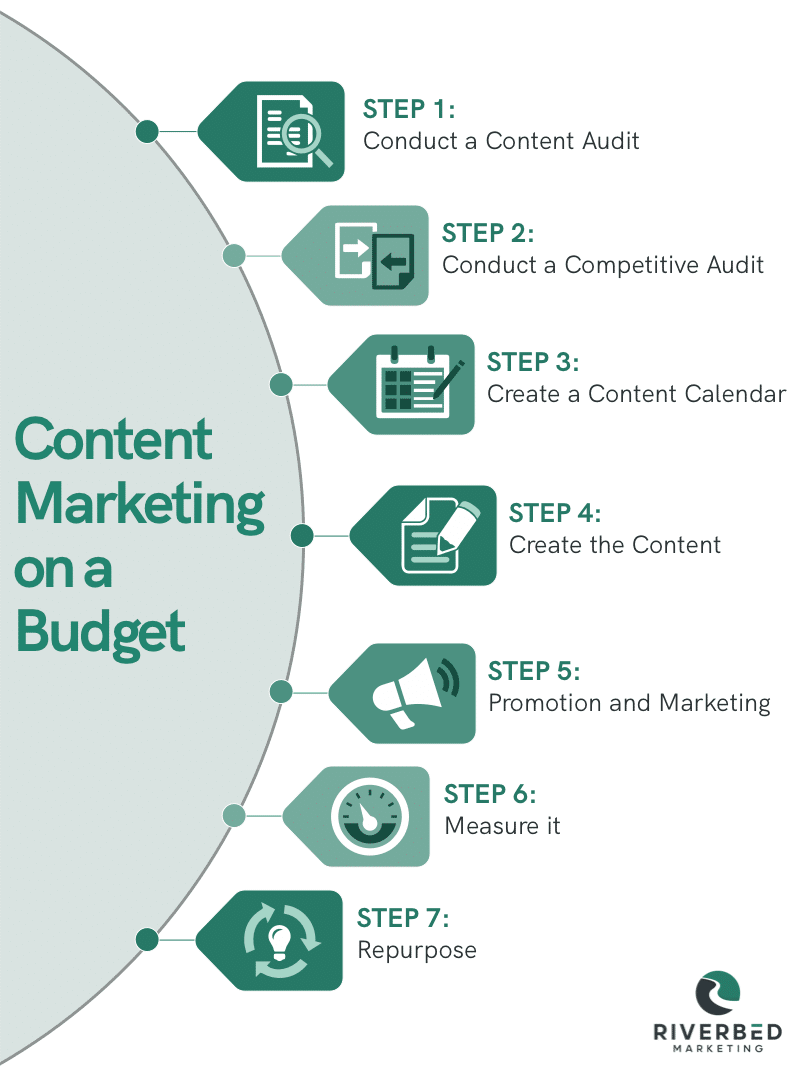Trying to execute a strategic B2B content marketing on a budget is a tall order. 70% of marketers are actively investing in content marketing. 78% of companies have teams of content marketing specialists. Many also use digital marketing agencies or outsource their B2B content marketing strategy. When you’re trying to compete against well-armed competitors, it can be difficult.
Table of Contents
ToggleWhy Is B2B Content Marketing Important?
For B2B buyers, content marketing as part of an inbound marketing strategy has become an essential tool. B2B buyers do an intense amount of research online before conversations with sales reps ever take place.
95% of buyers choose companies that provide valuable content. If you don’t offer high-quality content that provides value, you’ll miss being part of the research phase. You may never get the opportunity to pitch your product or service if you’re not in the mix during the research phase. What’s worse is that you may never know there’s an opportunity.
How Can I Do Content Marketing on a Budget?
If you don’t have teams of content specialists and a budget to match, you may be asking how you can do B2B content marketing on a budget. We’re here to help. We’ll break down the seven things you need to do to get started one step at a time.
Step 1: Conduct a Content Audit
The first step is to do an internal content audit to determine what you already have in your arsenal. Catalogue what’s on your website already and analyze its performance.
- Does it answer the questions B2B buyers are searching for?
- Does it include a compelling reason to take the next step on the customer journey?
- Is it providing quality leads?
What you’re trying to do is determine what’s working and what’s not. This can help as you create future content. There’s also another important question to ask at this point: What’s missing? By mapping your current content inventory against your sales funnel, you can look for gaps in the content available and aim to create more to support the sale effort at each stage. This allows you to have visibility into what content is needed and you can prioritize your marketing budget accordingly.
Step 2: Conduct a Competitive Audit
The next step is to analyze your competitors and look for opportunities they’re missing. You’ll want to do a content audit for your primary competitors.
You can do this manually or there are free or inexpensive tools available to conduct these audits.
Another way to identify potential content areas for you to explore is a plain old Google search. Type in the keywords and phrases people would use to search for content and examine the top organic search results that show up. This can help you determine what content performs the best.
Collecting B2B content marketing intelligence on your competitors can help identify the top-performing campaigns, the key marketing channels used, and the mediums that are engaging with the target audience.
Step 3: Create a Content Calendar
With the knowledge from steps one and two, you should have an idea of what content is working and what you need to create to hit B2B buyers during their customer journey.
A content calendar is exactly what its name implies. You’ll want to identify topics, frequency, and commit to posting dates. Content marketing should be a collaborative effort with your sales and marketing teams. Content efforts should align with sales initiatives, product releases, and sales-focused events whenever possible.
While you want to post frequently, it’s more about posting high-quality content. Quality trumps quantity here. When someone lands on your content, you want them to get real value.
Content Marketing Ideas
Here are some of the content marketing strategies you’ll want to explore when creating your content calendar:
- Evergreen content
Evergreen content is content that stands the test of time. Answering frequently asked questions and providing how-to guides, for example, will always be fresh for someone seeking it out at the top of the funnel. - Content Hub
The content hub is an important element when you’re doing content marketing on a budget. This is where all of your evergreen content will live. - Thought Leadership
Use your expertise and experts to develop content that demonstrates your authority. - Topical content
Topical content plays off of current events or industry trends.
Each of these will help position you as an expert in your industry. It establishes trust and gives B2B prospects confidence in your solutions. It will also help with your site’s SEO for B2B.
If you get stuck for idea generation even after completing your audits, there are free tools you can use online to help seed ideas, including:
Distribution Channels
It’s also important when developing your content calendar to think about how you will distribute it. You’ll want to choose the right platform for your message, whether it’s a blog post, guest post, landing page, social media post, or email.
An effective strategy when you’re doing B2B content marketing on a budget is to create a central piece of content, then adapt it to each distribution channel and linking back to the central content. For example, an email marketing campaign might use key bullet points from the content, then link to it for further information.
Step 4: Creating the Content
Once you’ve got the ideas in place, it’s time to create the content.
Most companies find it’s difficult to meet the quality and volume of content needed. Here are some ways businesses balance the need for quality and frequency:
- Asking in-house experts and other stakeholders to contribute
- Hiring an in-house content marketing team
- Hiring freelancers to create content
- Find industry leaders and guest bloggers to contribute
You may also want to hire a content marketing agency with SEO experience.
Determine Content Goals
Each piece of content will start with a goal: What do you want the reader to do when they’ve engaged with your content? Do you want them to call a sales rep, download a whitepaper, sign up for your email list, or something else? You’ll need to firmly establish your goal and write with the conversion in mind.
This included creating a strong Call-to-Action to drive conversions.
Content Curation
Another option to consider is content curation. Bringing together content from various industry sources and combining them can provide a valuable service for B2B prospects.
Step 5: Promotion and Marketing
If you build it, they will come, right? Well, not so fast.
The amount of content being published online is astounding. 78 million blog posts are added to WordPress every 60 seconds. That doesn’t include company websites, trade journals, or other media sites. It doesn’t include the 350 million tweets, 1.5 million Facebook and Instagram posts by brands daily, or 500 hours of video uploaded to YouTube every minute.
You’ll also need a content marketing plan to drive people to find your content. When you’re doing B2B marketing on a budget, start by using the resource you already control:
- Announce it on your website and provide links
- Add links to company email signatures
- Send it to your email list
- Use free tools from social media with targeting
- Comment on other relevant blogs with links to your content
- Reach out to industry influencers
- Adapt content to other free platforms, such as LinkedIn and Medium
- Make sure you’re using relevant keywords throughout your content while avoiding keyword stuffing
- Cross-link to other pages on your website from within your content
Especially in your early efforts with content marketing, you may find your content isn’t showing up very high in organic results. That can be a hurdle. More than 25% of people click the first result on Google and less than 12% click any deeper than 10 results down. Consider spending some money on paid search and targeted social media to improve your reach.
Step 6: Measure It
One of the keys to effective B2B content marketing is finding what resonates with your prospects. By measuring performance and conversions, you can determine which content enhances your lead generation, turns leads into sales-qualified leads, and ultimately leads to sales.
When you see something working, figure out what works and do more of it. If it’s not working, evaluate why and whether you need to fix it or ditch it.

Step 7: Repurpose
Don’t be afraid to take content that already performs well for you and expand or update it. More than half of B2B marketers report that updating high-performing older control has proven to be the most efficient tactic.
- Break down one article or blog into several stand-alone topics
- Create different forms of content, such as infographics, videos, or PowerPoints
- Combine blog posts on popular topics into longer-form content
- Freshen or update content with new information or expanded information
Effective B2B Content Marketing on a Budget
Just because it’s easy to throw content up on your website or you can post something free to social media, that doesn’t mean you have an effective B2B content marketing strategy. It takes planning, researching, and commitment to make it work.
These seven steps can get you started with your inbound marketing efforts. If you’d like to learn more about the best way to make content marketing work for you, contact the content marketing experts at Riverbed Marketing, a full-service marketing agency, today.













